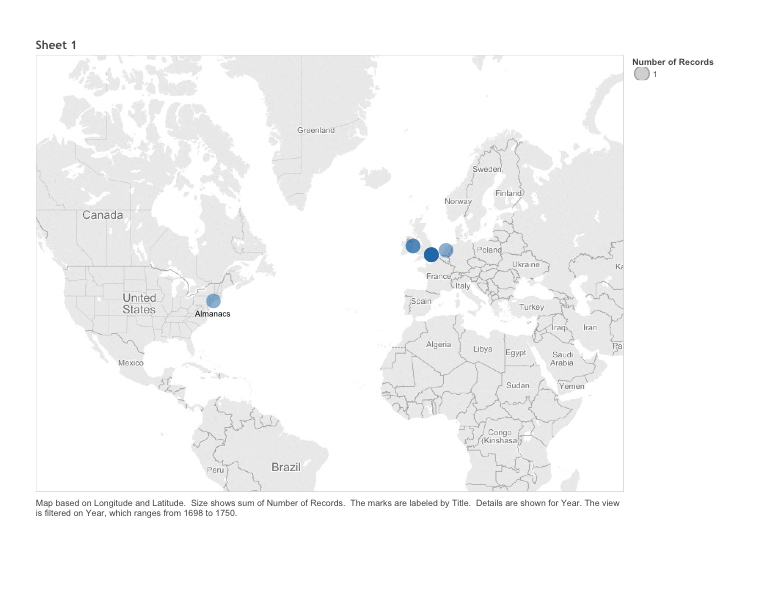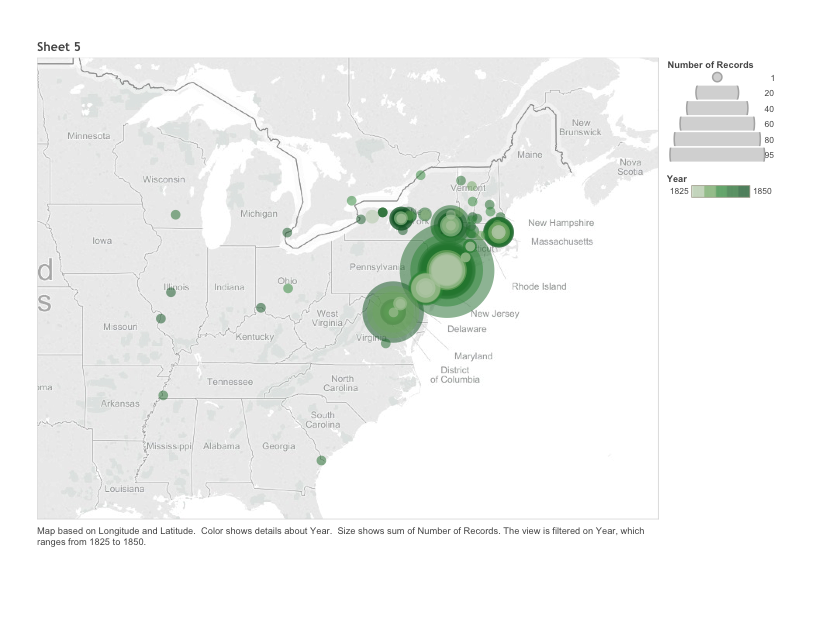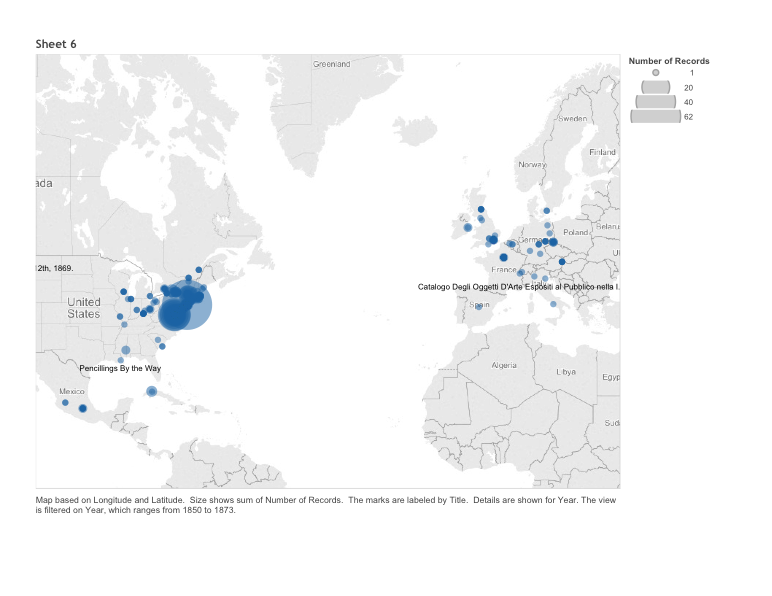Mapping the Seward Library
The Library Database contains bibliographic information for all the known books that were once housed in the Seward family library and all the books mentioned in family correspondence. This database was created by combining an inventory of books prepared by staff and volunteers in the Seward House Museum with an inventory of the Sewards' books housed in the Department of Rare Books, Special Collections, and Preservation of UR's Rush Rhees Library and annotations of authors and titles mentioned in the Seward family correspondence and commonplace books.
Rarely does a nineteenth-century family library survive intact, and even rarer is one as large as this one at over five thousand books. The database will continue to grow as we transcribe and annotate additional letters. From the physical copies of these books and the context provided by family correspondence and commonplace books, we can see what the family was reading and sometimes what they thought about what they were reading. The database contains law books, state department publications, novels, children's books, including school texts, reference works, collected speeches, and poems—books published in the United States and Europe. An especially interesting part of the collection is Fanny Seward's personal library of about 350 books. The collection is enclosed in a glass case in the Seward House Museum, where her father housed them as a memorial after her death in 1866. Fanny was an intellectually curious girl, who adopted her mother's reading habits and some of her tastes, and whose aspiration was to become a professional author. Her collection of novels, poems, and self-authored works in children's periodicals is an exciting example of a young woman's library during the 1800s.
Overall, the collection represented in our Library Database exemplifies what it meant to be a well-read, professional-class family in the mid-nineteenth century. The following graphics map the publication locations and dates of the books contained in the database, demonstrating how the Seward family's library changed and grew over time.

The earliest publication date for a book in the Seward Library is 1698, the Complete Collection of the Works of John Milton. The family has several other European works published before 1750, perhaps handed down to Henry from his grandfather, John Seward (1730-1797) or from Elijah Miller's father, Josiah Miller (1738-1817). These volumes were already precious antiques before Frances's and Henry's birth.

Many of the Seward family’s books were published between 1825 and 1850. Both Henry and Frances transitioned from young adults into newlyweds and, soon after, parents. Frances likely read Lydia Maria Child’s Flowers for Children (1848) with thoughtful reflection. Child wrote many poems, short stories, and domestic manuals for mothers. Flowers for Children, in a similar vein, presented a series of poems and anecdotes informing mothers about the proper way to raise their children.
Henry, due to his burgeoning political career, helped to fill the Seward family bookshelves even though he was apparently not as voracious a reader as his wife and daughter. Annual volumes of Laws of the State of the New York sat alongside other legal texts and commentaries. A glance at the books acquired between 1825 and 1850 reveals the working library a young lawyer focused on the politics of New York State.

Although Henry and Frances had their own reading interests, the couple used books to connect on a social and emotional level. They wrote letters to one another reviewing and sharing the latest books they read. After reading James Fennimore Cooper’s Water-Witch (1831), Henry enthusiastically wrote to Frances, “I shall forward it to you at the first opportunity.” He continued, “It is a strange, improbably, absurd, and unnatural story—Without the merit of one good character but one of the most bewitching books I ever read.” Books helped to bring Henry and Frances together when his career created physical and emotional distance in the marriage.
After Henry's appointment as the Secretary of State, the Seward family still found time for reading. Frances Adeline Seward, or Fanny, was an avid reader. Her own separate library reflects an enthusiasm for the acquisition of books. Henry, too, began to look abroad for reading materials, influenced by his own career in international diplomacy. He acquired new books from Spain, Germany, England, Italy, and Mexico, some or most of them as gifts from other diplomats. He also traveled with the newly adopted Olive Risley, her sister, and other family members around the globe. He acquired many gifts, books, and memories that are documented in William Henry Seward’s Travels Around the World (1873) and Olive Risley Seward's Around the World Stories (1889).
The books in the Library Database not only show what the Seward family read, but help us unravel a story of a family constantly in motion. Each book contributes to stories of marriage, parenthood, childhood, politics, medical practice, spirituality, literary tastes, and travel. The Library Database helps to understand the history of publication and consumption of books in Victorian-era America. More importantly, it reveals new stories about family members that have remained hidden in the family letters for almost 200 years.
